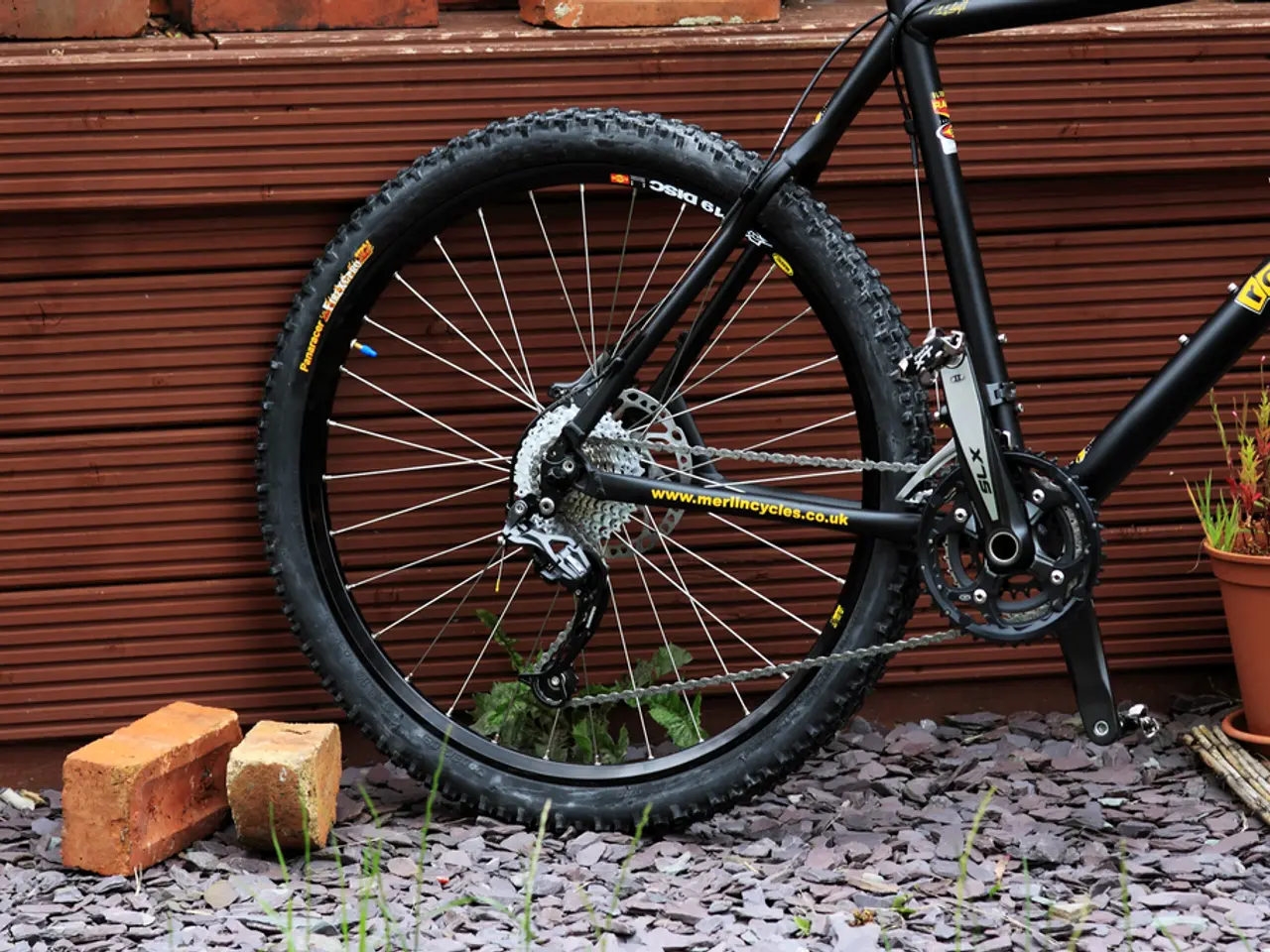Automating Construction: Engineering structures with the aid of robots
The Technical University of Munich and the Munich-Ebersberg Building Guild Collaborate on Climate-Optimized Construction
The Technical University of Munich (TUM) and the Munich-Ebersberg Building Guild have joined forces to revolutionize the construction industry by utilizing a robot for climate-optimized construction. This innovative approach aims to improve building sustainability by enabling climate-adapted walls through precise, robot-assisted bricklaying guided by digital climate data [1][3][5].
At the heart of this collaboration is a digital design configurator, a software that calculates the ideal angle and position for each brick based on solar radiation and shading at the construction site, aiming to optimize heat retention and insulation for the wall [1][3][5]. The robot, developed by TUM, complements the apprentices' craftsmanship by placing bricks at various angles which humans cannot achieve accurately, enabling a wall design that optimizes climate performance.
The robot arm, equipped with a gripper on a mobile base, works side-by-side with human apprentices, placing bricks precisely according to the digital plan. It stores a digital twin of the wall so the assembly logic is integrated directly into the building process [3]. The workshop, a part of the project Climate Active Envelopes, demonstrated that collaborative robotics does not mean replacing craftsmanship, but rather strategically expanding it. This opens up a perspective on a future-proof trade that is not displaced but strengthened by new technologies.
The project uses only bricks for simplicity and sustainability, building a 55 cm thick wall (about four brick layers deep) with different types of bricks—weather-resistant clinker bricks on the outside and insulating perforated bricks inside—to improve climate resilience and facilitate future dismantling or reuse [4][5]. The robot was present to ensure the outer layer of the brick wall was built correctly, as more than 200 bricks out of 1,700 were not exactly on top of each other.
Prof. Kathrin Dörfler, Chair of Digital Fabrication at TUM, emphasizes the potential for sustainable and climate-adapted construction through human-machine cooperation. The Munich-Ebersberg Building Guild used a robot in a team for the first time, and the workshop served as a testament to the efficiency and precision that such collaboration can bring [1][3][4].
TUM, one of the world's leading research and education institutions, is consistently ranked among the best universities in Europe. Recognized as an "Excellence University" in 2006, 2012, and 2019, TUM is committed to fostering innovation and collaboration, making it an ideal partner for such groundbreaking projects.
For media inquiries, please contact Andreas Schmitz at [email protected] or 0162-27 46 193. For scientific inquiries regarding the project, please contact Prof. Dr. Kathrin Dörfler at [email protected]. A video demonstrating the use of the robot in building a wall is also available.
Sources: [1] TUM.de (2022). Robot helps bricklaying apprentices build climate-optimized wall. Retrieved from https://www.tum.de/en/about-tum/news/press-releases/detail/article/34560/ [2] TUM.de (n.d.). Digital Fabrication. Retrieved from https://www.tum.de/en/research/expertise/digital-fabrication/ [3] TUM.de (2022). Robot arm for bricklaying. Retrieved from https://www.tum.de/en/research/expertise/digital-fabrication/research/robotic-construction/robot-arm-for-bricklaying/ [4] TUM.de (2022). Climate Active Envelopes. Retrieved from https://www.tum.de/en/research/expertise/digital-fabrication/research/climate-active-envelopes/ [5] TUM.de (2022). Climate-Optimized Construction. Retrieved from https://www.tum.de/en/research/expertise/digital-fabrication/research/climate-optimized-construction/
- The collaboration between the Technical University of Munich and the Munich-Ebersberg Building Guild illustrates the integration of technology, such as artificial intelligence and robotics, into the field of environmental science, specifically climate-optimized construction.
- The digital design configurator, a software developed for this project, uses climate data to create a wall design that incorporates science and technology, maximizing heat retention and insulation for a more energy-efficient building structure.
- The use of artificial intelligence and robotics in this project represents a fusion of science, technology, and art, as the robot's precision and accuracy expand the capabilities of traditional bricklaying, contributing to the creation of a more sustainable built environment.




